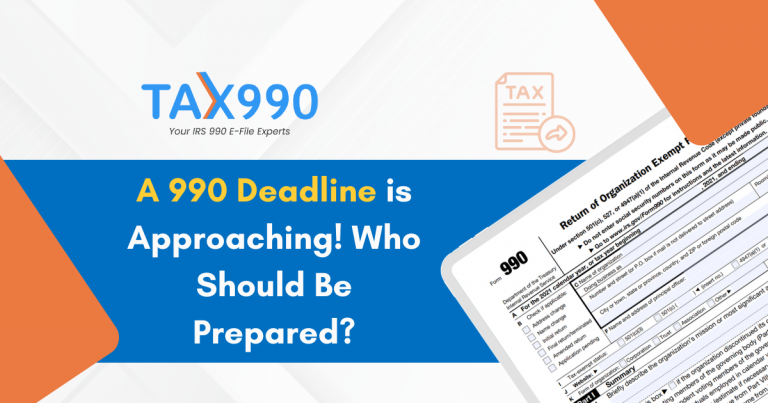5 Frequently Asked Questions About Form 990-PF
Estimated reading time: 9 minute(s)

Form 990-PF is a variant of the 990 series used by private foundations to report their total assets, financial activities, grants, awards, charitable distributions, and governing officers to the IRS. It also helps private foundations calculate taxes based on investment income.
Here are five common questions that a private foundation may have while preparing for its upcoming tax filing deadline.
1. Should my organization file Form 990-PF?
As there are multiple variants of 990 forms available, this is one of the common questions that you may have. Here is your answer!
Organizations that are classified as private foundations by the IRS should file Form 990-PF for every tax year. No matter what the value of your organization’s gross receipts is. Primarily, it is filed by,
- Exempt and Taxable Private foundations
- Section 4947(a)(1) nonexempt charitable trusts treated as private foundations
- Organizations that made an election under section 41(e)(6)(D)(iv)
2. What Information should I report on Form 990-PF?
There are 16 parts in Form 990-PF, and of course, there’s a lot of information to report. Before you e-file Form 990-PF, it’s helpful to make sure you have all the required documents ready for a smooth filing process. Basically, Form 990-PF asks for your organization’s basic information, followed by details of your organization’s activities, revenue, expenses, members, and net assets.
Also, the foundations that file Form 990-PF may also be required to include Schedule B if they receive contributions of $5,000 or more from a single contributor during the tax year.
3. When is my Form 990-PF due?
Like other 990 variants, the deadline to file Form 990-PF is the 15th day of the 5th month after the end of the organization’s accounting period. When this due date falls on a holiday or weekend, private foundations have until the next business day to file.
So for the 2022 tax year, the deadline for foundations operating on a calendar tax year is May 15th, 2023. Failing to file Form 990-PF within the deadline may lead to hefty penalties.
4. Is there any extension to file?
Of course, Yes! If you need more time to file, you can file Form 8868 and get a 6-month extension without providing any reason or facing any penalties. Let’s say your original Form 990-PF deadline is May 15th, and you need more time to file. In this case, you can apply for an extension and push your deadline to November 15th.
Filing an extension before the deadline can not only avoid the penalties but also give you that extra bit of time you may need to gather all the information required for filing.
5. How to File Form 990-PF?
Starting from the 2019 tax year, Form 990-PF can only be e-filed. So, the first thing that you should do before kick-starting your filing is to find an IRS-authorized e-file provider, and Tax 990 is already here for you!
- As we mentioned earlier, completing Form 990-PF can be complicated. But with the remarkable features of Tax 990, you can complete and e-file your 990-PF with complete ease and perfection.
- Tax 990 offers an Interview-style and a Form-based filing method for your convenience.
- Tax 990 also offers live customer support, Automatic error checks, Instant updates on your filing status, and more useful features to simplify your filing process.
- Our system will also include Schedule B with your 990-PF Form at no extra cost, based on the data you enter.
E-file your Form 990-PF with Tax 990 today.



